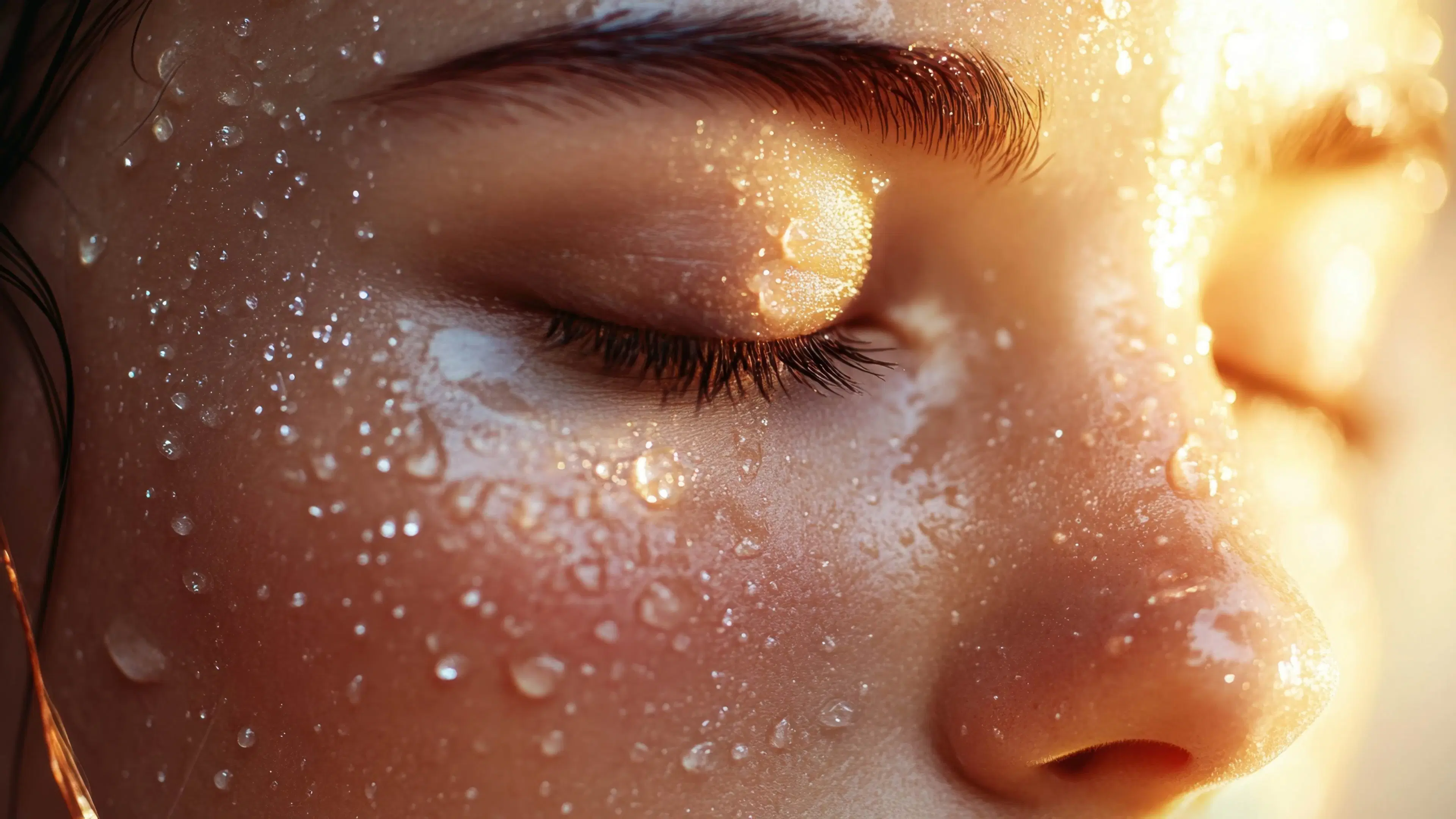
Beauty & Skincare
•04 min read
-9872eb55-9af0-4022-8644-bd8f05e8333e.png&w=3840&q=75)
Peptides and hyaluronic acid are two powerhouse ingredients in modern skincare, celebrated for their ability to improve skin texture, hydration, and elasticity. In this post, we explore whether you can use peptides with hyaluronic acid together, unraveling the benefits and providing expert guidance on how to layer these ingredients for a dynamic skincare routine. Read on to learn how combining peptides and hyaluronic acid can work wonders on your skin, offering a balanced approach to hydration and anti-aging care.
Peptides are short chains of amino acids that act as building blocks for proteins like collagen and elastin. These proteins are essential for maintaining skin firmness and elasticity. Often used for anti-aging skincare, peptides help stimulate collagen production, repair skin damage, and improve overall skin texture. Their ability to promote a stronger skin barrier makes them a favorite for those seeking to reduce fine lines and wrinkles. The peptides and hyaluronic acid benefits go beyond simple hydration by improving resilience with every application.
Hyaluronic acid, on the other hand, is a naturally occurring molecule in the skin that holds water, keeping it hydrated and plump. In any skincare routine, using peptides in skincare routine along with hyaluronic acid can amplify hydration while boosting overall skin health. Hyaluronic acid acts as a humectant, drawing in moisture and ensuring that your skin retains hydration throughout the day. Its compatibility with various skincare ingredients makes it excellent for enhancing the absorption of active ingredients.
Key Benefits of Peptides: Stimulate collagen synthesis, enhance skin repair, and reduce inflammation.
Key Benefits of Hyaluronic Acid: Deep hydration, improved skin elasticity, and enhanced moisture retention.
The answer is a confident yes. Peptides and hyaluronic acid are highly compatible and often work best when used in tandem. The hyaluronic acid and peptides combination creates a synergistic effect: while hyaluronic acid hydrates and prepares the skin, peptides help target specific concerns like aging and recovery. This fusion supports enhanced hydration, reinforces the skin’s barrier, and improves the overall appearance.
By integrating peptides for anti-aging skincare with a hyaluronic acid serum with peptides, you can enjoy boosted hydration and a smoother skin texture. This pairing is an ideal choice for anyone looking to maximize both hydration and repair in their daily routine. With the best way to apply peptides and hyaluronic acid, it is essential to allow each product to work effectively on its own before combining them.
Enhanced Hydration: Hyaluronic acid boosts moisture retention and peptides help lock in that hydration.
Improved Collagen Production: Peptides encourage collagen synthesis, reducing fine lines and delivering a youthful glow.
Optimized Skin Repair: Both ingredients together support skin repair and rejuvenation without harsh irritation.
-5ba1f1f6-995b-4617-a1ff-43890351cff7.png&w=3840&q=75)
Proper layering is crucial when incorporating peptides and hyaluronic acid into your skincare routine. To fully enjoy the peptides and hydration in skincare benefits, start with a cleanser to remove impurities and prep your skin for the active ingredients. Next, apply the hyaluronic acid product while your skin is still damp. This step is vital because damp skin maximizes the moisture-binding properties of hyaluronic acid.
After allowing the hyaluronic acid to absorb for a minute or two, apply a peptide serum or cream that targets issues such as wrinkles and loss of elasticity. This layering ensures that while the hyaluronic acid hydrates, the peptides are able to support skin repair and collagen production. Finish the routine with a moisturizer that seals in the benefits of both products, and during the morning routine, complete your routine with SPF to safeguard your skin from harmful UV rays.
Cleanse your skin with a gentle cleanser.
Apply hyaluronic acid to damp skin for optimal hydration.
Follow with a peptide serum to address specific skin concerns.
Seal the benefits with a moisturizer, then protect with SPF in the morning.
Expert Tip: The Vital Role of pH Balance
The effectiveness of peptides and hyaluronic acid can be influenced by your skin's pH balance. Peptides perform best in a slightly acidic environment, while hyaluronic acid is versatile across various pH levels. To enjoy maximum benefits and avoid any negative reactions, ensure your skincare products keep your skin's pH balanced.
While using peptides and hyaluronic acid together is generally safe, it is important to consider your skin's sensitivity. Peptides can sometimes cause irritation in sensitive skin, especially when used alongside exfoliants or strong actives like retinol. If you experience redness or discomfort, reduce the frequency of application or patch test new products first.
Hyaluronic acid is very forgiving, yet caution is advised when mixing it with highly acidic products. Overly acidic formulations can destabilize the hydrating properties of hyaluronic acid and might disrupt the balance required for peptides to work effectively. It’s important to maintain a healthy balance in your skincare routine by avoiding incompatible ingredients and sticking to gentle formulations that enhance overall skin health.
Maintaining clear skincare ingredients compatibility is key to achieving the best results and ensuring that you reap the full benefits of both peptides and hyaluronic acid.

Apply hyaluronic acid first to hydrate the skin, followed by peptides to target specific issues like wrinkles and loss of elasticity.
Peptides may cause irritation in sensitive skin, particularly when used with harsh active ingredients.
Start with a hyaluronic acid serum on damp skin to lock in moisture, then apply the peptide serum to boost collagen production and repair the skin.
Avoid combining hyaluronic acid with highly acidic products, as this may destabilize its hydrating benefits.
In summary, peptides and hyaluronic acid form a dynamic duo in skincare. This combination nurtures your skin with deep hydration while supporting collagen production and repair. By understanding how to layer peptides and hyaluronic acid and taking necessary precautions, you can enhance your skincare routine for a smoother, more youthful appearance. Embrace these expert insights to create a routine that not only transforms your skin but also reflects your personal style and commitment to healthy, responsible skincare.